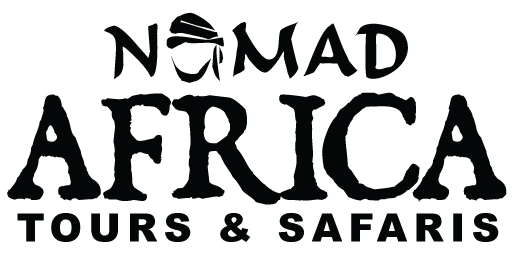Please note: This itinerary is flexible and can be changed without notice. A detailed, up-to-date dossier itinerary is available to download. Be aware, this particular itinerary can be changed without notice in order to accommodate the best possible viewing of the Mountain Gorillas. The Permit price to visit the Gorillas can also change without notice.
Day 1 – Masindi – Murchison Falls National Park
Also referred to as the Kabaraga Falls, Murchison Falls is a waterfall found on the course of the great Nile and is located within the Murchison National Park. The park is recognized as one of the best National Parks in Uganda. After settling into our accommodation in Masindi, your guide will brief you on the activities for the following day.
Day 2 – Masindi – Budongo Central Forest Reserve
Budongo Forest is the biggest Mahogany forest found in the whole of East Africa and is home to the largest number of chimpanzees throughout Uganda. It is believed that there are between 600 – 700 chimpanzees in Budongo and this morning we will meet up with our chimp guide who will take us on our trek through the forest in search of the chimps. We will also enjoy a boat cruise in the park. Note: As the Chimp trekking is limited
to 12 guests per trek, should there be more than 12 guests on a tour the trekking will be split between the morning and the afternoon. Therefore you may find that you will first do the game drive activity followed by the Chimp trekking or vice versa. Please allow for flexibility.
Day 3 – Lake Kikorongo
This morning we depart Masindi and transfer towards the edges of the Queen Elizabeth National Park. Our accommodation for the night is nestled atop a hill overlooking Lake Kikorongo.
Day 4 – Gorillas (Lake Bunyonyi)
Crossing the Equator once more we travel south to the beautiful scenery of Lake Bunyonyi. With eager anticipation we prepare for the upcoming Gorilla trekking excursion and tonight we will receive a briefing on what to expect.
Day 5 – Gorillas (Lake Bunyonyi)
The mountain gorilla is extremely endangered and while exact numbers vary it is widely assumed that there are only around 650 left. Visiting the gorillas is a great way to support their future on earth as the money spent on permits is used for their protection. An extremely important part of the future conservation of the remaining gorillas rests in the community development work – as local communities change their attitudes towards wildlife and start to protect rather than poach, the future of the mountain gorilla is assured.
As permits granting permission to visit the gorillas are extremely limited we require flexibility in both the tour itinerary and where we actually visit them. The home of the mountain gorillas is completely at odds with man-made borders and so their range encompasses Uganda, Rwanda and the DRC (Democratic Republic of the Congo). Whenever possible we choose to make use of the National Park in Uganda, but this depends on the availability of permits. Should we not obtain permits to visit the mountain gorillas in Uganda then we will inform all passengers beforehand that the tour will travel to Rwanda or DRC.
On your free day in Bunyonyi you will have the opportunity to participate in certain optional activities. You can also go hiking or explore the area on a mountain bike.
Day 6 – Gorillas (Lake Bunyonyi)
Although there are 2 days allocated to Gorilla Trekking you will only spend one day on the trek. The other days are there to provide a large enough window in which to obtain permits and to allow the entire group to trek if there are more than 6 of you on the tour.
Day 7 – Lake Mburo
We depart the beautiful Lake Bunyonyi for another of Uganda’s beautiful water bodies – Lake Mburo. Lake Mburo is situated in the Ankole sub-region of Uganda, near the town of Mbarara, and spans an area of approximately 260 square kilometers and is surrounded by rolling hills, open grasslands, and patches of woodland. With over 350 recorded bird species, Lake Mburo National Park is a paradise for birdwatchers. The park’s diverse ecosystems, which include acacia woodlands, savannahs, and wetlands, provide optimal habitats for numerous bird species, including the rare and odd looking shoebill stork.
Day 8 – Kampala
This morning we set off on our return journey to Kampala and make a crossing of the Equator along our way. Your tour comes to an end upon arrival in the city.
